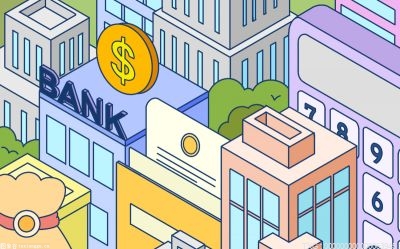CBN Friday Special丨Theme park temptation: Does China need a third Disneyland?|当前焦点
Everyone deserves a bit of the Disney charm.
 【资料图】
【资料图】
The magical brand is a global leader in entertainment, with its beloved characters, stories and theme parks enchanting millions of fans and visitors every year.
But just not every city that wants a Disneyland gets sprinkled with fairy dust.
Rumors that The Walt Disney Company will build another Disneyland in a major Chinese city have been circulating again this week.
In China, Disney already runs two theme parks in Hong Kong and Shanghai, which are both hot spots for domestic and international tourists. However, there have been persistent rumors and speculations about Disney’s intention to build a third theme park in China, with various cities competing for the chance to host the project.
Despite government officials in Qingdao, eastern Shandong province saying earlier in the week that they have been in talks with Disney recently, the California-based firm has no plans to locate a third theme park in the coastal city, said Pan Feng, director of the Qingdao Municipal Bureau of Culture and Tourism.
Rumors that a new Disney World would be built in Tianjin, a city near Beijing, Wuhan in central Hubei province or Chengdu in southwestern Sichuan province have also all been denied.
Will the US entertainment giant build a third Disneyland in China? The answer is unlikely, as then it will actually compete with itself, said Lin Huanjie, the head of the China Theme Park Research Institute, adding that it will only continue to expand in Shanghai, adding good new attractions.
But there is always going to be news of a third Disneyland in China as this is good publicity and should another resort be built, it will be a great boost to the local economy, though it is unclear whether Disney will even pursue this plan at all.
For example, Shanghai Disney Resort, which opened in 2016 as Disney’s second theme park in China and sixth in the world, has been a huge success and a showcase of Disney’s creativity in localization.
Walt Disney’s Shanghai park can handle 80,000 guests per day and covers 390 hectares (963 acres), around three times the size of the Hong Kong facility. It is part of the Shanghai Disney Resort, which also features Disneytown, the Wishing Star Park and the Toy Story Hotel.
Unlike Hong Kong Disneyland, Shanghai Disney Resort pays a lower royalty fee to Disney, and has more autonomy and flexibility in designing and operating its attractions. The resort also incorporates many elements of Chinese culture and preferences into its offerings, such as featuring Mulan as a prominent character, creating a Garden of Twelve Friends based on the Chinese zodiac animals, serving local cuisines at its restaurants, and celebrating Chinese festivals at its events.
Shanghai Disney Resort has attracted over 10 million visitors annually since its opening year, making it one of the most popular theme parks in China and Asia. Despite the impact of COVID-19 pandemic on its operations in 2020-2021, Shanghai Disney Resort has quickly resumed normal operations with strict health measures and continued to launch new attractions and experiences for its guests.
Given the success of Shanghai Disney Resort and the huge potential of China’s theme park market, it is not surprising that Disney would consider building a third theme park in China. However, there are many challenges and uncertainties involved in such a plan, such as finding a suitable location, securing government approval, negotiating partnership terms, managing construction costs, and competing with other players.
Even with a Disneyland, there is no guarantee of return. Hong Kong Disneyland, Disney’s first theme park in China opened in 2005, is the smallest Disney park in the world. The park was a joint venture between Disney and the Hong Kong government, with Disney paying a high royalty fee for using its brand and intellectual property.
The park initially struggled to attract visitors and make profits, due to its small size, high ticket prices, limited attractions and fierce competition from other regional parks.
With the expansion of new lands and rides, as well as the influx of mainland tourists, Hong Kong Disneyland gradually turned around and achieved profitability in 2012.
However, since 2016, Hong Kong Disneyland has faced a sharp decline in visitors and revenue. The park announced a financial deficit of HK$2.1 billion for the most recent fiscal year - its eighth in a row without turning a profit.
The happiness business
Since China’s optimization of Covid policy at the end of last year, the country’s theme park industry quickly resume strong growth and sustain recovery momentum this year thanks to a post-Covid tourism boom.
Shanghai is putting behind three years of damage caused by the pandemic to its tourism industry. The metropolis of 25 million residents greeted 15.6 million tourists during the five-day May Day holiday this year, with long queues seen at major tourism landmarks from the Oriental Pearl TV Tower to the Wild Animal Park and Shanghai Disneyland.
And the resort is set to raise its regular ticket price by 9.2 percent to 475 yuan that covers most days and weekends from June 23, gearing up for the peak summer holiday season.
Admission prices for special days and weekends will be increased by 9.9 percent to 599 yuan, and the price for most public holidays and the summer season will go up by 9.1 percent to 719 yuan. Ticket prices that cover special-event days and select public holidays will increase by 3.9 percent to 799 yuan.
The theme park industry is expected to regain the strong pre-pandemic growth in 2023 thanks to the release of pent-up leisure travel demand, experts noted.
Consumption, an important driver of China’s economy, has seen the fastest recovery of any sector from the fallout of the pandemic, as the easing of mobility restrictions have unleashed demand for dining, shopping and traveling.
Nationwide, tourism revenue surged to 148 billion yuan during the golden week in May, topping the pre-pandemic level in 2019, according to official data.
Tickets for both Shanghai Disneyland and Universal Studios Beijing almost sold out ahead of the Labor Day holiday. Some 92,000 visitors arrived at Atlantis Sanya, a water park in southern Hainan Province during the week, more than four times the number in the same period last year, according to data from Chinese conglomerate Fosun International.
Haichang Ocean Park, Asia’s largest water park operator, said the “booming” tourism market had boosted its average daily admissions by 105 percent during the May Day holiday from the same period in 2019. Compared to 2022, attendance and revenue soared nearly sixfold and eightfold, respectively.
In Beijing, UK-based Merlin Entertainments is reportedly to begin construction of Legoland park this year to tap the country’s recovery.
According to US credit rating agency Fitch Ratings, the recovery of the theme park industry would pick up speed in the first half of 2023, bringing profitability and cash flow generation back to pre-pandemic levels. Full-year attendance is also forecast to surpass levels seen before Covid-19.
Up until 2019, Chinese theme parks had enjoyed strong growth, with six of them making it into the top 25 global theme parks by attendance, versus only two in 2013. They also dominated the Asia-Pacific top 20 parks by attendance, with more than a 50 percent share.
The three leading operators, Shenzhen Overseas Chinese Town (OCT), Fantawild Holdings, and Chimelong Group, had a combined attendance of 141 million in 2019, up from 42 million in 2012. This boosted their share of global park attendance to 27 percent from 12 percent during that period.
OCT replaced Universal Parks and Resorts to become the world’s third-largest theme park group in 2019.
Infrastructure consulting firm Aecom said the number of theme parks in China rose from less than 50 in 2008 to 156 by the end of 2020.
More are set to open this year, especially in eastern, central and southwest China. OCT Group’s Happy Valley park in Xi’an and Haichang’s water park in Zhengzhou are scheduled to open this year, while Fantawild also expects to launch projects in Xuzhou, Yingtan, and Linhai.
China is now the second largest market for theme parks globally, and even during the challenges of the COVID-19 pandemic the country’s attraction industry continued to evolve, expand, and hold its global position, a report by McKinsey showed.
Driven by strong consumer enthusiasm, China’s theme park industry has transformed considerably over the past few decades, with hundreds of local players tapping into a rapidly growing market.
China's theme park sector is dominated by local operators after decades of developing. China's first theme park, Splendid China, opened in Shenzhen in 1989 and quickly became a hit. Since then, theme parks have attracted a large number of visitors with new experiences.
The industry has entered the fast lane since 1996, with hundreds of local firms competing to set foot in this rapidly growing market, each with diversified strengths. For instance, Chimelong built nation-wide brand awareness with its Guangdong theme park complex that includes unique product offerings such as a wild animal park, amusement park, water park, ocean park, and circuses.
International brands with strong intellectual property (IP) have upped the game to compete for visitors, and by the end of 2021, three new international theme parks had opened in China including Disneyland Shanghai and Hong Kong, and Universal Studios Beijing.
Still, the Chinese theme park market has enormous potential—McKinsey analysis suggests that only 27 percent of China’s population has ever visited a theme park, less than half the average for developed markets, at 68 percent. And the market size could more than double from 40 billion yuan in 2019, to over 90 billion yuan by the end of 2025.
迪士尼最近又火了。
近期,关于迪士尼希望在国内建设第三家主题乐园的消息忽然甚嚣尘上,天津和成都先后被指可能是迪士尼新乐园的落户城市。
6月6日,据青岛新闻网的消息,当日下午,青岛市文化和旅游局党组书记、局长潘峰在“民生在线”网谈直播间针对网传迪士尼要在中国建设第三座迪士尼度假区,有望落户青岛的话题回应称,青岛市文化和旅游局一直高度重视主题乐园项目的招商和建设工作,今年就引进迪士尼项目曾与迪士尼公司进行过多次对接。目前,还没有迪士尼公司落户青岛并投资项目的计划。
此前传出与迪士尼相关消息的还有武汉、天津、成都等地。
6月3日,湖北发布当日早间推送的微信消息显示,有网友询问武汉市相关部门能否引进迪士尼乐园,武汉市蔡甸区商务局招商科回复称:“目前迪士尼项目由上级部门接洽,武汉市商务局刚刚与迪士尼展开初步洽谈,努力推动达成项目落户意向……”
然而,在该消息广泛传播后,湖北发布删除了相关消息。针对该消息,上海迪士尼度假区公共事务与传讯副总裁Murray King (王凯) 代表迪士尼方面回复称,这是假新闻。
更早前的4月和5月,“迪士尼海洋乐园落户天津”、“成都龙泉驿区将迎来迪士尼乐园入驻”等消息均在网络传播,并相继被“辟谣”。
为什么总是有关于中国要建第三座迪士尼的消息传出?
中国主题公园研究院院长林焕杰表示,从游客的角度来看,“迪士尼”这三个字是世界主题乐园最响亮的品牌;而从城市发展的角度来看,如果在某个地方有迪士尼乐园,对当地的经济、娱乐、交通、餐饮、酒店等拉动就会非常多也非常大。另一方面,迪士尼公园属于稀缺资源,迪士尼公司会根据国家或者区域当地的游客量和市场的接受度以及竞争情况来进行布局。
因此,专家认为,中国建造第三座迪士尼主题公园的概率并不大,因为会出现自己跟自己竞争的现象。
其实,无论城市,还是市民期盼乐园落户本地,关键因素就是迪士尼的品牌“溢出效应”显著。毕竟,一座迪士尼带来的远不只是旅游收入,还对当地乃至周边城市的经济、就业等有着相当可观的促进作用。
但对迪士尼来说,主题乐园也绝非开一家赚一家。
中国地区的首家迪士尼主题乐园是香港迪士尼乐园,也是全球最小的迪士尼乐园。2005年9月,占地面积约1.27平方公里香港迪士尼正式开园,共有7个主题园区。
因为香港迪士尼是以加盟商身份获得美国华特迪士尼授权使用其商标和卡通,每年需要支付高昂的品牌使用费,约占到总收入的20%,因此香港迪士尼的票价开业初期比东京迪士尼还贵,
香港迪士尼开业前七年,基本处于亏损状态,直到2012年才实现首次盈利。2012年,香港迪士尼的净利润达1.09亿港元,随后两年,香港迪士尼乐园盈利一路飙升。2014年净利润已达3.32亿港元,收入渐入佳境与那时内地赴港“自由行”热潮有着密切关系,每年数百万人次的内地游客,有相当一部分是冲着香港迪士尼而来。
可惜,2016年开始香港迪士尼乐园的游客数量和收入直线下滑,颓势明显。5月15日,香港迪士尼公布的2022年财年业绩报告显示,2022全年业务收入按年上升31%至22亿港元,净亏损为8.61亿港元。这已经是香港迪士尼连续第八年录得亏损。
这两年,香港迪士尼每年的客流总量只有700万人次左右,与年客流量超千万人次的上海迪士尼度假区,形成了鲜明对比。
上海迪士尼“钞能力”
占地面积3.9平方公里的上海迪士尼度假区,其中主题乐园面积为1.16平方公里,有着远比香港迪士尼乐园面积更大的集游玩、购物与休闲于一体的迪士尼小镇。
自2016年开业仅半年,上海迪士尼乐园入园游客就达560万,成为迪士尼全球乐园的开园过程中游客人数最快突破500万的乐园之一。
2017年5月19日,上海迪士尼乐园迎来第1000万名游客;2017年6月18日,开业仅一年的上海迪士尼乐园就已实现盈利。
与香港迪士尼只是加盟商身份不同,上海迪士尼背后的两大股东分别为华特迪士尼公司与上海申迪集团,双方投资设立了两家业主公司和一家管理公司,分别为上海国际主题乐园有限公司、上海国际主题乐园配套设施有限公司,以及上海国际主题乐园和度假区管理有限公司。
其中,两家业主公司申迪均为大股东,持有57%的股份;华特迪士尼公司持有剩余的43%的股份;管理公司则由华特迪士尼持有70%,这家公司负责上海迪士尼乐园的运营工作。
自从开业以来,上海迪士尼几乎每年都在“建建建”,2019年,上海迪士尼宣布扩建第八个主题园区“疯狂动物城”,这是全球首个“疯狂动物城”主题园区,目前也即将竣工。
开业后的上海迪士尼度假区始终是全球游客人次排名第二的主题乐园,仅次于美国华特迪士尼度假区。
中国旅游研究院的一份报告显示,从2016年6月-2019年6月,上海迪士尼乐园固定资产投资对上海全市GDP年均拉动0.13%;乐园消费对上海全市GDP年均拉动0.21%。
2023年疫情结束后,上海迪士尼日均客流量便迅速攀升,每日基本保持在3.5万人次以上,周末和节假日能达到6~8万日均人次,客流量已达到疫情前规模。
2021年,上海迪士尼乐园度假区在开园五年后,公布了一组数据:
园区五年内累计接待游客超8300万人次,实现旅游收入超400亿元人民币,实现税收约26亿元人民币,平均每位游客的消费金额在1000元~2000元人民币左右。
平均算下来,上海迪士尼乐园度假区年平均收入超过80亿元人民币。
不仅门票收入,周边和餐饮收入同样可观。开业五年内,上海迪士尼共计售出577万个毛绒玩具,相当于每4位游客就会买走1个毛绒玩具;乐园小食售出约500万支米奇和米妮经典冰淇淋,以及200万支玉米热狗。
上海迪士尼还帮助当地创造直接就业岗位1.2万个,间接就业岗位约6万个,后者多是为上海迪士尼度假区提供服务的岗位,带动文旅相关行业岗位更是不计其数。
值得关注的是,上海迪士尼近期宣布停止发售年卡,且开始了开园后的第四轮涨价。
其中,最便宜的“常规日”门票价格由435元涨为475元,涵盖大部分平日和部分周末;最贵的“特别高峰日”门票价格则由769元涨至799元,涵盖部分国内法定节假日放假和调休以及乐园特定活动时期。
这样算下来,国内一家三口如果来上海迪士尼游玩,算上门票、食宿等费用,每次总开销不会低于万元。
这也是为何当“第三家迪士尼主题乐园”消息出现后,那么多城市渴望成为迪士尼新“东家”,彼此看中的正是“迪士尼”背后强大的吸金能力:品牌本身自带强IP属性,对游客具有强大的虹吸能力,还能同时带动城市投资和就业双增长,诱惑力实在难以抗拒。而城市也希望能拿出吸引人的“文化IP”,可以持续长久地带动消费。
国内大型主题公园遍地开花
今年以来,受旅游消费复苏转旺带动,国内主题公园市场恢复增长势头。
据携程平台数据,2月20日至5月20日,全国主题乐园门票订单量同比增长368%,主题乐园人均消费同比增长24%。其中,本地主题乐园预订占比29%,周边主题乐园预订占比37%。主题乐园预订量最高的游客常驻地城市分别是上海、北京、深圳、广州、杭州、成都。
虽然疫情对于主题乐园造成了不小的冲击,但今年以来,主题公园作为亲子出游、年轻人受欢迎的旅游项目恢复迅速。北京环球影城和上海迪士尼的热门项目排队时间都到了2小时以上,五一期间上海迪士尼“翱翔·飞跃地平线”项目排队时间更是超过了225分钟。
惠誉评级中国企业研究董事朱彧表示,在2019年之前,主题乐园市场在国内发展迅速。之后由于疫情发展放缓,尤其是主要客源为跨省游客的大型主题乐园受影响更大。今年,由于国内居民受到压抑的娱乐消费需求急需释放,她认为整个主题乐园行业也会恢复到疫情前的强势增长。
在对中国主题乐园市场长期看好的背景下,国际品牌进入中国市场的脚步一直也没有停下。据不完全统计,近年来共有11个国际主题品牌旗下25座主题公园相继进入国内。
已经开园的北京环球影城度假区和上海迪士尼度假区正在规划二期和三期,而目前在国内有四家主题乐园布局的乐高乐园也在加速施工准备开业中。
国际品牌接连入驻,中国主题乐园市场的竞争愈发激烈。
据麦肯锡中国《中国主题公园迎来新时代》报告,目前,中国主题公园市场规模已居全球第二,并仍将保持增长态势——即使疫情期间,中国的旅游景区行业也在继续发展、扩大,并保持其全球地位。
《2021全球主题公园和博物馆报告》的数据显示,长隆海洋王国排在第8位,高于排在第10位的上海迪士尼乐园。长隆海洋王国2019年的游客量达1173.6万人次,也超过上海迪士尼乐园的1121.1万人次。此外,北京欢乐谷和广州长隆欢乐世界也榜上有名,位列第24和第25位。
过去几十年,中国主题公园的市场格局经历巨变,可分为起步、激增和转型三个特点鲜明的发展阶段。中国第一座主题公园——锦绣中华1989年在深圳正式开园并迅速走红。此后,主题公园以其崭新体验吸引了大批游客,推动了市场发展。在成功起步的鼓舞下,行业自1996年起进入激增期,数百家本土企业竞相涉足这一迅速增长的市场,形成了差异化、多样化的发展格局。不同运营商选择基于不同的IP打造特色品牌。
截至2021年底,中国已拥有三座国际化连锁主题公园,即位于上海和香港的迪士尼乐园,以及位于北京的环球影城。尽管面临来自乐高乐园、环球影城和迪士尼等国际领先运营商的强势竞争压力,欢乐谷、方特和长隆等本土运营商依然表现强劲,并有望保持市场份额。凭借庞大的业务组合规模、连锁乐园数量和广泛的地理布局,本土头部主题公园始终占据大部分市场份额。2019年,81%的游客选择本土主题公园;预计到2025年,本土主题公园将继续服务70%-75%的游客。
未来默林娱乐、六旗娱乐、团聚公园集团等国际知名主题公园运营商将相继进入中国市场,为中国主题公园市场带来新鲜血液,激发与满足更多潜在用户需求。根据美国Research and market对中国主题公园的预测,未来5年预计将以7.2%的年均复合增长率发展,2027年我国主题公园市场规模预计突破500亿元。
中国主题市场仍有巨大潜力可以挖掘。麦肯锡中国的数据显示,中国主题公园市场渗透率目前仅为27%,不及发达市场平均水平(68%)的一半。预计未来市场规模将在2019年约400亿元人民币的基础上翻番有余,到2025年底或超过900亿元。
Executive Editor: Sonia YU
Editor: LI Yanxia
Host: Stephanie LI
Writer: Stephanie LI
Sound Editor: Stephanie LI
Graphic Designer: ZHENG Wenjing, LIAO Yuanni
Produced by 21st Century Business Herald Dept. of Overseas News.
Presented by SFC
编委: 于晓娜
策划、编辑:李艳霞
播音:李莹亮
撰稿:李莹亮
音频制作:李莹亮
设计:郑文静、廖苑妮
21世纪经济报道海外部 制作
南方财经全媒体集团 出品

























